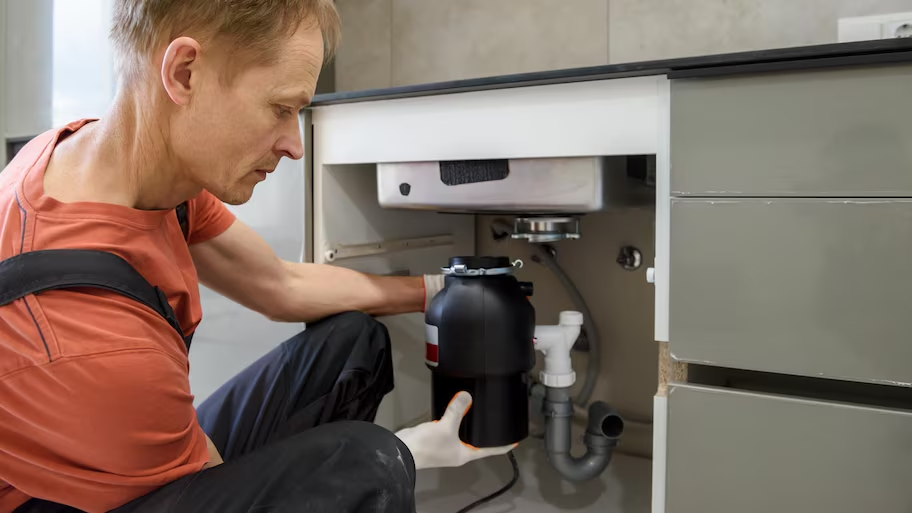Your Definitive Guide to Fixing a Leaky Waste Disposal Unit
Your Definitive Guide to Fixing a Leaky Waste Disposal Unit
Blog Article
Just about every person seems to have their own unique conception in relation to Why Is .

Waste disposal unit are necessary kitchen area home appliances that aid in disposing of food waste effectively. Nonetheless, a leaking waste disposal unit can be a frustrating and untidy trouble to take care of. Fortunately, lots of leakages can be fixed quickly with a couple of easy actions. In this article, we will certainly review just how to take care of a dripping waste disposal unit efficiently.
Intro
Waste disposal unit are installed under cooking area sinks and are made to shred food waste right into smaller sized pieces, enabling it to travel through the plumbing system easily. While these devices are normally reliable, leaks can happen gradually as a result of wear and tear, loose connections, or damage to the device.
Step-by-Step Overview to Fixing a Dripping Waste Disposal Unit
Switch off the Power
Before attempting any repairs, ensure that the power to the waste disposal unit device is switched off to stop the danger of electric shock.
Locate the Leakage
Determine the exact location of the leakage and figure out the cause
Tighten up Connections
Utilize a wrench to tighten any kind of loosened connections between the disposal unit and the plumbing system.
Replace Seals or Gaskets
If the leak is because of worn seals or gaskets, get rid of the old parts and change them with brand-new ones.
Patching Splits or Holes
For splits or openings in the disposal device, usage epoxy or an appropriate patching product to seal the broken area.
Identifying the Source of the Leakage
Prior to trying to repair a dripping garbage disposal, it is necessary to identify the source of the leakage. This can normally be done via aesthetic evaluation or by conducting straightforward examinations.
Visual Evaluation
Examine the garbage disposal device thoroughly for any indications of water leakage. Pay attention to locations around seals, gaskets, and connection factors.
Evaluating for Leakages
One way to check for leaks is by running water with the disposal unit and checking for any type of noticeable signs of leak.
Common Root Causes Of Leakages in Garbage Disposals
Worn Seals and Gaskets
Seals and gaskets play a vital duty in stopping water from dripping out of the waste disposal unit. Gradually, these parts can deteriorate, resulting in leaks around the disposal system.
Loose Links
The connections in between the waste disposal unit and the plumbing system can end up being loosened with time, causing water to leak out throughout operation.
Splits or Openings in the Disposal Device
Physical damages to the waste disposal unit, such as splits or openings in the real estate, can additionally cause leakages.
Devices and Products Needed for Taking Care Of a Dripping Waste Disposal Unit
Before beginning the repair work procedure, gather the necessary tools and materials, consisting of a screwdriver, adjustable wrench, plumber's putty, substitute seals or gaskets, and epoxy or patching product for fixing fractures or holes.
Examining the Waste Disposal Unit After Repair Service
When the repair work is full, test the garbage disposal by running water via it to make sure that the leak has actually been dealt with.
Preventive Upkeep Tips to Prevent Future Leakages
To avoid future leaks, it is vital to execute regular upkeep on your garbage disposal. This consists of maintaining it tidy, avoiding placing non-food things or difficult things down the disposal, and periodically looking for leaks or other concerns.
Conclusion
To conclude, fixing a leaking waste disposal unit is a reasonably uncomplicated process that can be completed with basic devices and products. By adhering to the steps described in this article and exercising precautionary upkeep, you can maintain your waste disposal unit in good working condition and prevent expensive repair work in the future.
HERE’S HOW TO FIX YOUR GARBAGE DISPOSAL
WHAT TO DO IF SOMETHING IS STUCK IN YOUR GARBAGE DISPOSAL
If the impeller won’t turn, there’s probably something stuck in the disposal. It could be a steak bone or peach pit, although plumbers report pulling all sorts of inappropriate objects out of disposals, such as bottle caps or aluminum foil. Make sure power to the disposal is off, and look inside to see if you can see the source of the jam.
Never stick your fingers in a disposal. Pull out anything you see with tongs or pliers.
If the disposal still won’t work, it may be time to call a plumber or consider buying a new disposal. GEM Plumbing & Heating is here for all of your garbage disposal needs.
WHAT TO DO IF YOUR GARBAGE DISPOSAL DRAIN IS CLOGGED
Take everything out from underneath your sink and put a bucket or other container under your disposal to catch any water that drains out. Disconnect your disposal from the power supply. If it’s plugged into a wall outlet, unplug it. If it’s hardwired into an electrical box, go to the electrical panel and turn off the breaker for the disposal. Pour ¼ cup of baking soda into the drain, followed by ½ cup of white vinegar. Give the solution a few minutes to fizz and do its work. Look into the disposal with a flashlight to see if you can see an object that might be causing the clog. If you see it, remove it using tongs or pliers. MORE TIPS ON DEALING WITH A CLOGGED GARBAGE DISPOSAL
Never use drain cleaner in a garbage disposal. It can damage the plastic parts inside the disposal. You can also be splashed with the caustic liquid while working to clear the clog. Beware! Never stick your fingers into a garbage disposal. Trust us — not a good idea. In many instances, your dishwasher drains through your garbage disposal. This allows the disposal to grind any large food particles that may be drained out of your dishwasher. There are some jurisdictions, however, where the plumbing code prohibits such a connection. WHAT TO DO WHEN YOUR DISHWASHER DRAINS THROUGH THE DISPOSAL
Run some water in the sink so your plunger has at least a ½-inch of water to create a seal and plunge vigorously up and down several times. You may need to repeat this several times. Run hot water down the drain to clear any residue that remains.

As a keen person who reads about Why Is , I imagined sharing that piece of writing was essential. Sharing is caring. Helping people is fun. Thank-you for going through it.
Quote Report this page